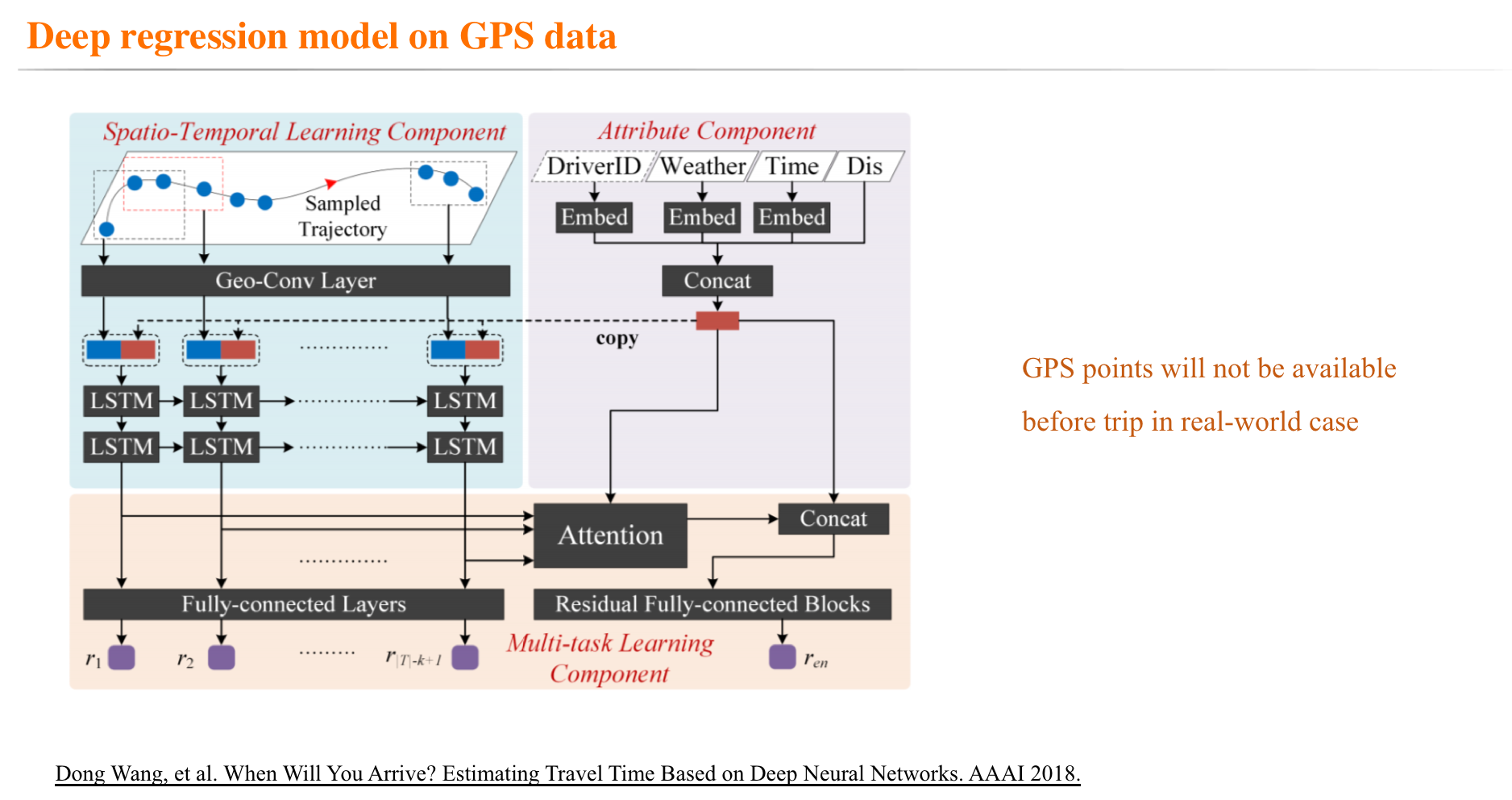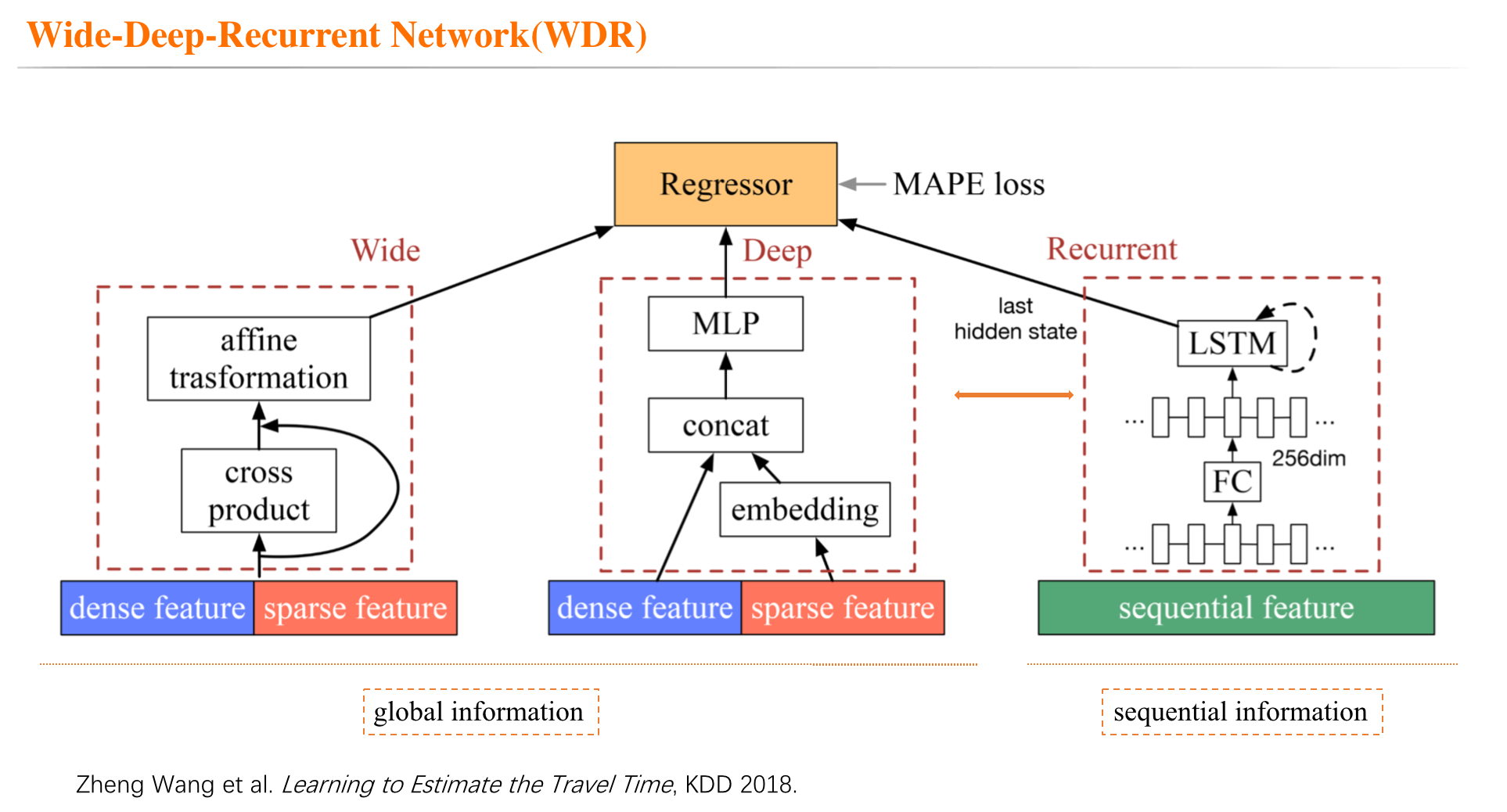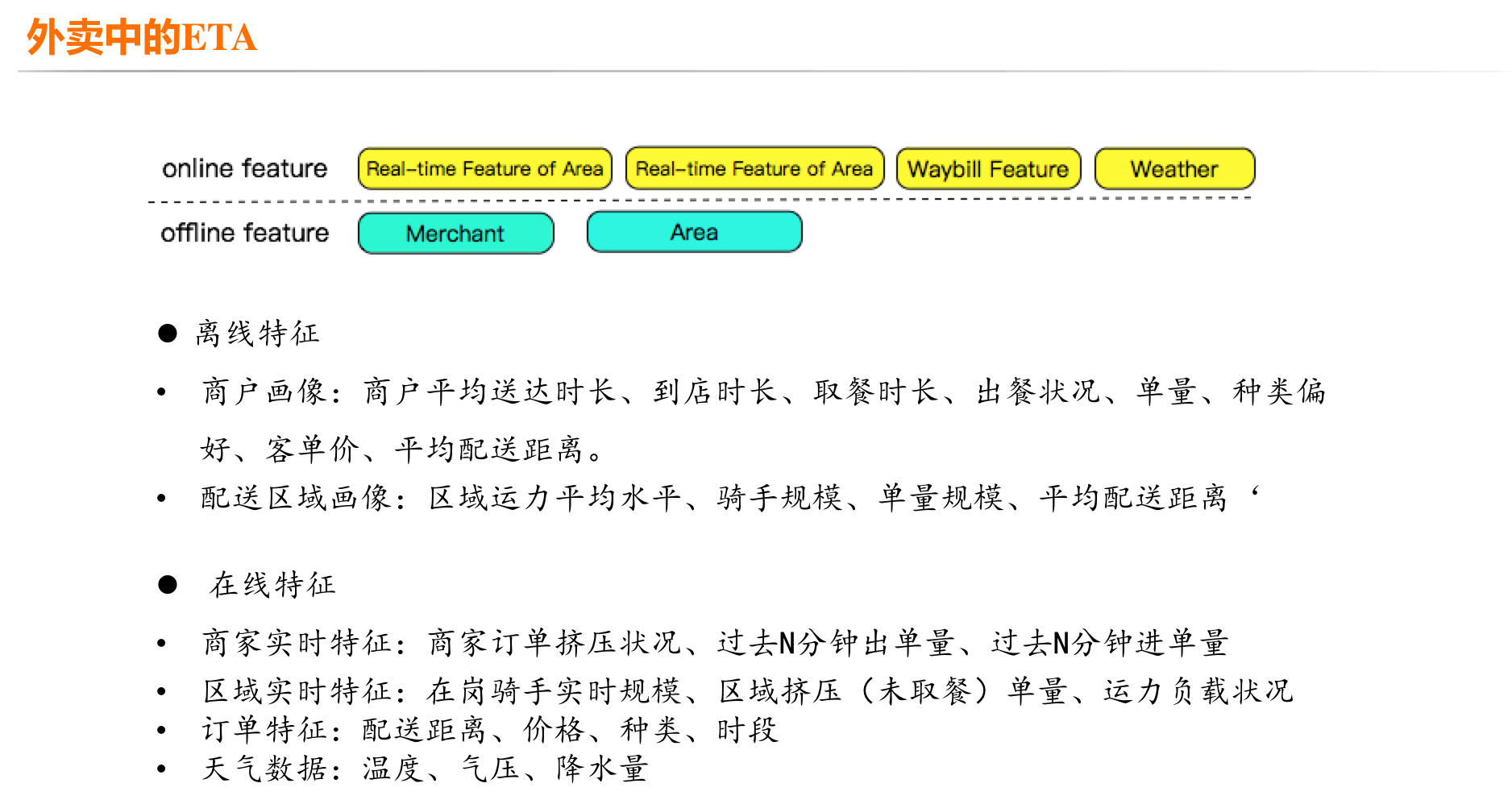Route-based models
- Simple Additive Model
- Data-driven Model
Path-free models
- MURAT Model
Chun-Hsin et al. Travel-time prediction with support vector regression. IEEE Trans. ITS 2004.
Yanjie Duan et al. Travel time prediction with LSTM neural network. ITSC 2016.
Hongjian Wang et al. A simple baseline for travel time estimation using large-scale trip data. SIGSPATIAL 2016.
Dong Wang, et al. When Will You Arrive? Estimating Travel Time Based on Deep Neural Networks. AAAI 2018.


Zheng Wang et al. Learning to Estimate the Travel Time, KDD 2018.

[19]Hongjian Wang, Yu-Hsuan Kuo, Daniel Kifer, and Zhenhui Li. 2016. A simple baseline for travel time estimation using large-scale trip data. In Proceedings of the 24th ACM SIGSPATIAL International Conference on Advances in Geographic Information Systems.
[20] Yilun Wang, Yu Zheng, and Yexiang Xue. 2014. Travel Time Estimation of a Path Using Sparse Trajectories. In Proceedings of the 20th ACM SIGKDD International Conference on Knowledge Discovery and Data Mining (KDD ’14).
MURAT模型:
MUlti-task Representation learning model for Arrival Time estimation
Dumitru Erhan, Yoshua Bengio, Aaron Courville, Pierre-Antoine Manzagol, Pas- cal Vincent, and Samy Bengio. 2010. Why does unsupervised pre-training help deep learning? Journal of Machine Learning Research 11, Feb (2010), 625–660.
Yaguang Li et al. Multi-task Representation Learning for Travel Time Estimation, KDD, 2018
